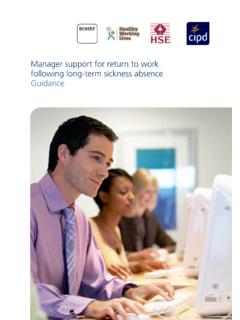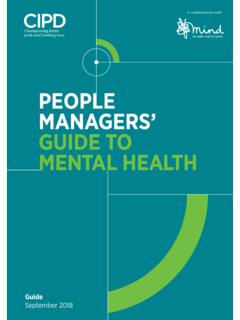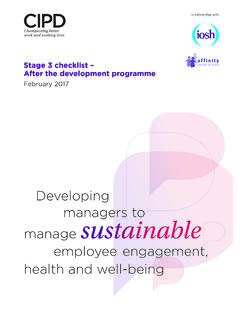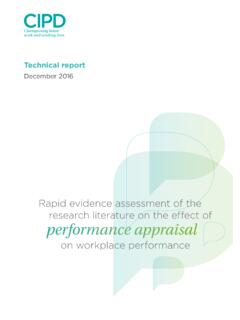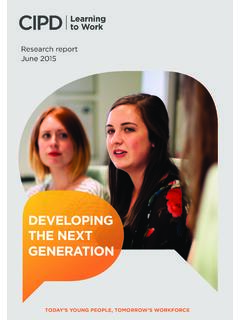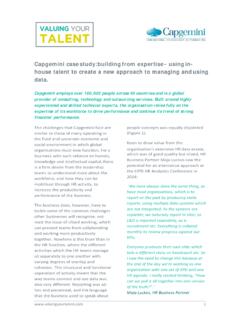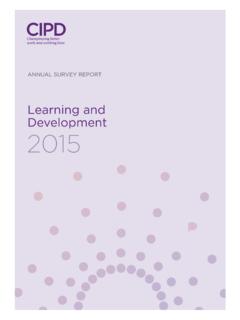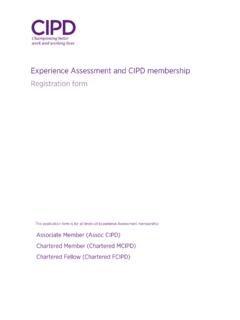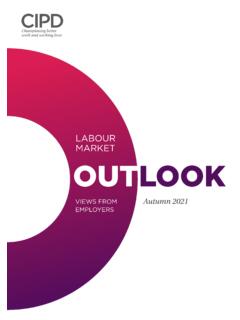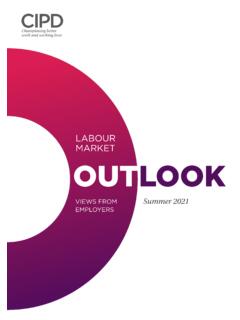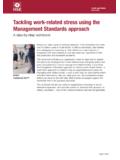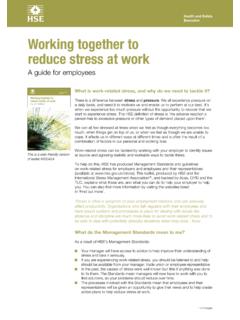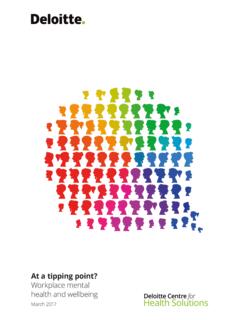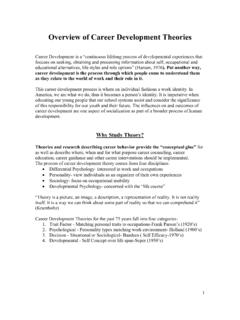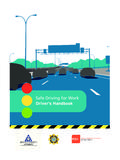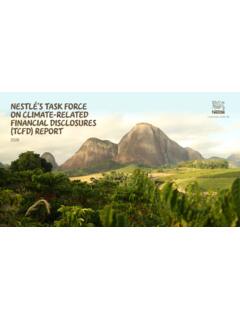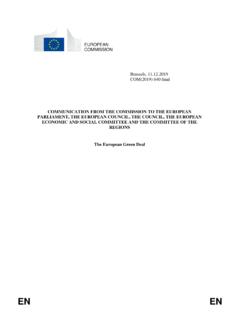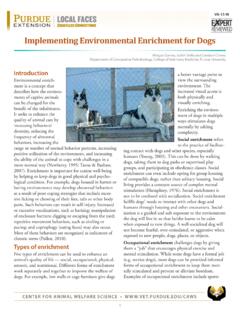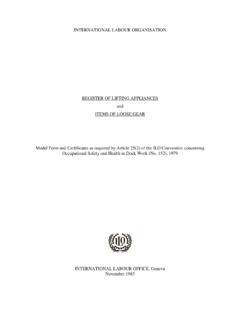Transcription of MANAGING A RETURN TO WORK AFTER LONG-TERM ABSENCE
1 GuideJune 2021 Guide for HRMANAGING A RETURN TO work AFTER LONG-TERM ABSENCEIn partnership withManaging a RETURN to work AFTER LONG-TERM absence1234567892 The CIPD is the professional body for HR and people development. The registered charity champions better work and working lives and has been setting the benchmark for excellence in people and organisation development for more than 100 years. It has more than 150,000 members across the world, provides thought leadership through independent research on the world of work , and o!ers professional training and accreditation for those working in HR and learning and a RETURN to work AFTER LONG-TERM absence1234567891 AcknowledgementsThis guide has been developed in collaboration with Dr Jo Yarker, Affinity Health at work , and draws on research and perspectives of returning workers, colleagues, line managers, occupational health and rehabilitation professionals as well as HR professionals.
2 Guide for HRManaging a RETURN to work AFTER LONG-TERM ABSENCE Contents1 Bupa viewpoint 22 Introduction 33 Why we need to tackle LONG-TERM sickness ABSENCE 44 Shared responsibility for supporting returning employees 55 Guiding principles to support the RETURN -to- work journey 86 Updating policies and processes in light of the pandemic 117 Legal obligations 138 Conclusion 149 Useful resources 15 MANAGING a RETURN to work AFTER LONG-TERM absence12345678921 Bupa viewpoint HR teams are crucial in supporting an effective RETURN to work AFTER LONG-TERM ABSENCE , helping both the individual and the manager. Approximately 16,400 workers leave the workplace each year as a result of injury or illness, many of whom may have stayed in work with better support. For businesses, this is a huge loss of talent, as this employee will already have the skills, knowledge and training for that role and in and protecting employees is a significant responsibility for all businesses, and HR teams play an essential a line manager should hold the closest relationship to the employee, from dealing with them on a day-to-day basis and keeping in contact with them while they are out of the business, the role of the HR team is to help the individual and their line manager prepare an employee for their RETURN to work , giving them all the information they need and ensuring a smooth and fair transition back to most common reasons why employees take a LONG-TERM leave of ABSENCE include mental ill health, musculoskeletal conditions and stress.
3 Data from our Anytime HealthLine has shown a phenomenal rise in calls; at the start of the pandemic we saw a 250% increase in calls with people experiencing anxiety, stress and depression. These have remained steady throughout the pandemic, with people citing mental health as a key thing they were struggling with. Another trend is people being unable to access or worried about accessing primary care through their usual means. This means a lot of conditions have gone untreated, resulting in more employees needing time off to manage symptoms and later intervention. For those working from home, the impact of not having a designated workspace has meant that more people are experiencing aches and pains. Our research1 shows that only one in three (33%) people have a dedicated workspace in their home, and as a result, homeworkers are using their sofas, kitchen chairs or even beds as makeshift workstations.
4 This was mirrored by data from our Physioline, which saw a spike in calls between June and October with posture- related the majority of staff working from home and increased pressures, on top of the pandemic which has heightened mental health conditions we believe we will see more people needing LONG-TERM leave for these reasons in the coming months. As well as this, as we move out of the pandemic and understand the impact it has had on our workforce, it s important that HR teams are able to support employees where they may be struggling. From bereavement to long COVID, there are a range of factors that will affect LONG-TERM ABSENCE over the coming months and extra considerations need to be taken to reflect with occupational health professionals to provide support is also hugely beneficial. Their role is to make sure that employees are healthy and safe while in work and manage any risks in the workplace that are likely to give rise to work - related ill health.
5 As we move out of the pandemic, this support will be hugely valuable to HR is no one size fits all approach to returning to work AFTER LONG-TERM ABSENCE and it s key that the right support is in place to help with the Research conducted among 2,003 UK adults by Opinium Research on behalf of Bupa UK, 24 27 April viewpointAlaana Woods, Bupa Health ClinicsManaging a RETURN to work AFTER LONG-TERM absence12345678932 Introduction This guide aims to provide information on effectively MANAGING an employee s RETURN to work AFTER LONG-TERM shows that employees are more likely to RETURN to work safely and productively following LONG-TERM sickness ABSENCE if they are well supported during their ABSENCE and on their RETURN . Everyone has a role to play in the RETURN -to- work journey: returning individuals need to prioritise self-care and self-management to sustain their health and work ; colleagues can provide valuable practical and emotional support; line managers can help returning employees access the work adjustments and support that they need to work effectively; while organisations with compassionate and flexible ABSENCE management policies and rehabilitation approaches can help to accommodate individual need to review existing provision to offer adequate support has been strengthened during the COVID-19 pandemic with the emergence of post-COVID syndrome, or long COVID (as outlined below).
6 Sadly, more and more people are facing a long recovery from this new syndrome, meaning there is more need than ever before to ensure that those who need work adjustments or job modifications (including reduced hours or flexible work ) are able to access them to facilitate a RETURN to key considerations for MANAGING an effective RETURN , including for those suffering from long COVID, are outlined in this is LONG-TERM ABSENCE ? LONG-TERM ABSENCE is usually defined as four weeks or more of continuous to the CIPD s 2021 Health and Wellbeing at work report, the most prevalent conditions responsible for LONG-TERM ABSENCE are: mental ill health (such as clinical depression and anxiety) musculoskeletal conditions (such as neck strain and repetitive strain injury, including back pain) stress acute medical conditions. Having good ABSENCE management practices in place and being prepared to manage a RETURN will give the returning employee the best chance of getting back to work safely, confidently and in a timely way.
7 The impact of long COVIDThe COVID-19 pandemic has had a significant impact on ABSENCE management, not least in the emergence of what has been dubbed long COVID . NICE defines post-COVID syndrome or long COVID as signs and symptoms that develop during or following an infection consistent with COVID-19 which continue for more than 12 weeks and are not explained by an alternative diagnosis .We are still learning about the impact of long COVID, but we have learned that: One in five people experience symptoms lasting between 5 and 12 weeks. One in ten people experience symptoms AFTER 12 weeks or longer. Symptoms vary between individuals, are overlapping and affect multiple systems in the body. The most common symptoms include fatigue, breathlessness, muscle and joint pain, chest pain and mental health concerns among a RETURN to work AFTER LONG-TERM absence1234567894 Symptoms are unpredictable and fluctuate over time, characterised by periods of recovery and sudden relapse (sometimes with new or different symptoms).
8 Recovery can be slow and the fluctuation of symptoms means that employees often need to increase their activity and work slowly over time. This means some employees may need work adjustments or job modifications (including reduced hours or flexible work ) over many months. The NHS provides some rehabilitation services to people recovering from the impact of COVID-19. However, access to support varies across the Society of Occupational Medicine, with input from the CIPD and other organisations, has produced a guide for recovering are still a lot of unknown factors when it comes to MANAGING an employee s RETURN following long COVID. What we do know from employees experiencing other conditions (such as mental ill health or cancer) is that many ABSENCE management policies lack the flexibility to effectively support employees with fluctuating and LONG-TERM conditions. It is important that HR professionals review their existing provision, using the information provided in this guide, to ensure that adequate provisions are in place to support employees returning from long guide provides an introduction to supporting a RETURN from LONG-TERM sickness ABSENCE and sets out the reasons why we need to take action, supporting HR professionals to develop a business case should further resources be needed.
9 The principles of shared responsibility for supporting returning employees and the guiding principles to support the RETURN -to- work journey are outlined. HR professionals are encouraged to review and update existing policies and practices in light of recent learnings from research. The legal obligations of employers to absent and returning employees are also provided. This guide equips HR professionals with the information needed to effectively manage an employee s RETURN to work AFTER LONG-TERM ABSENCE . 3 Why we need to tackle LONG-TERM sickness ABSENCE The costs of LONG-TERM sickness ABSENCE to organisations, HR professionals and employees are significant. Some of the compelling reasons for tackling LONG-TERM sickness ABSENCE are outlined an organisational perspective ABSENCE is a persistent problem for organisations and presents a major public health and economic concern.
10 In 2020, million working days were lost due to sickness or injury and nearly 560,000 workers suffered a new case of ill health which they believed to be caused or made worse by their work . New cases of ill health alone are estimated to cost Britain billion, the equivalent of 19,000 per case. 16,400 workers permanently withdraw from the labour market each year as a result of a workplace injury or work - related ill health, many of whom may have stayed in work with better support. This is a significant loss of talent, skills, knowledge and training investment to we need to tackle LONG-TERM sickness absenceManaging a RETURN to work AFTER LONG-TERM absence1234567895 While the sickness ABSENCE rate reached a record low in 2020, this is no time for complacency as factors such as furlough, social distancing, shielding and increased homeworking during the COVID-19 pandemic may contribute to these figures.
